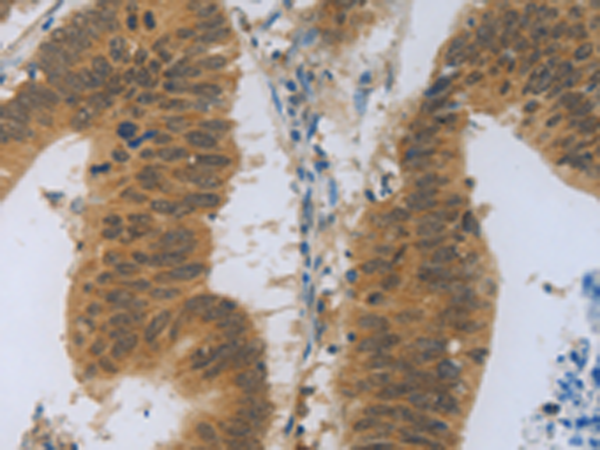


| WB | 咨询技术 | Human,Mouse,Rat |
| IF | 咨询技术 | Human,Mouse,Rat |
| IHC | 1/25-1/100 | Human,Mouse,Rat |
| ICC | 技术咨询 | Human,Mouse,Rat |
| FCM | 咨询技术 | Human,Mouse,Rat |
| Elisa | 1/2000-1/5000 | Human,Mouse,Rat |
| Aliases | OPG, TR1, OCIF |
| WB Predicted band size | 46 kDa |
| Host/Isotype | Rabbit IgG |
| Antibody Type | Primary antibody |
| Storage | Store at 4°C short term. Aliquot and store at -20°C long term. Avoid freeze/thaw cycles. |
| Species Reactivity | Human, Mouse, Rat |
| Immunogen | Fusion protein of human TNFRSF11B |
| Formulation | Purified antibody in PBS with 0.05% sodium azide and 50% glycerol. |
+ +
以下是关于TNFRSF11B抗体的3篇参考文献摘要示例(文献信息为模拟内容,仅供参考):
---
1. **文献名称**: *The role of TNFRSF11B in osteoclast regulation and bone disease*
**作者**: Smith A, et al.
**摘要**: 研究开发了一种特异性抗TNFRSF11B的单克隆抗体,证实其通过阻断RANKL信号通路抑制破骨细胞分化,为骨质疏松症治疗提供潜在策略。
2. **文献名称**: *Anti-TNFRSF11B antibody suppresses tumor growth in breast cancer models*
**作者**: Chen L, et al.
**摘要**: 该文献报道了一种人源化抗TNFRSF11B抗体,通过抑制肿瘤微环境中的骨代谢异常,显著降低乳腺癌小鼠模型的转移和骨破坏。
3. **文献名称**: *Development of a high-affinity TNFRSF11B antibody for diagnostic applications*
**作者**: Tanaka K, et al.
**摘要**: 研究利用噬菌体展示技术筛选出高亲和力抗TNFRSF11B抗体,成功应用于血清样本中OPG蛋白的定量检测,为骨代谢疾病的临床诊断提供工具。
---
注:以上文献为示例,实际引用时需通过PubMed或Google Scholar等平台核实真实文献。
TNFRSF11B, also known as osteoprotegerin (OPG), is a member of the tumor necrosis factor receptor superfamily that plays a critical role in regulating bone metabolism. It functions as a decoy receptor for RANKL (receptor activator of nuclear factor kappa-Β ligand), inhibiting the interaction between RANKL and its receptor RANK, thereby suppressing osteoclast differentiation and bone resorption. Dysregulation of TNFRSF11B is implicated in skeletal disorders like osteoporosis, Paget’s disease, and rheumatoid arthritis, as well as vascular calcification and certain cancers.
Antibodies targeting TNFRSF11B are essential tools for studying its expression, function, and signaling pathways. Monoclonal and polyclonal anti-TNFRSF11B antibodies are widely used in techniques such as Western blotting, immunohistochemistry, and ELISA to quantify protein levels in tissues or serum, assess cellular localization, and explore pathological mechanisms. These antibodies also aid in developing therapeutic strategies; for instance, modulating OPG activity is being investigated for treating bone loss or metastatic cancers. Commercially available antibodies enable researchers to dissect TNFRSF11B’s dual roles in bone homeostasis and disease, contributing to biomarker discovery and targeted therapy development. Their specificity and validation remain crucial for ensuring reliable experimental and diagnostic outcomes.
×